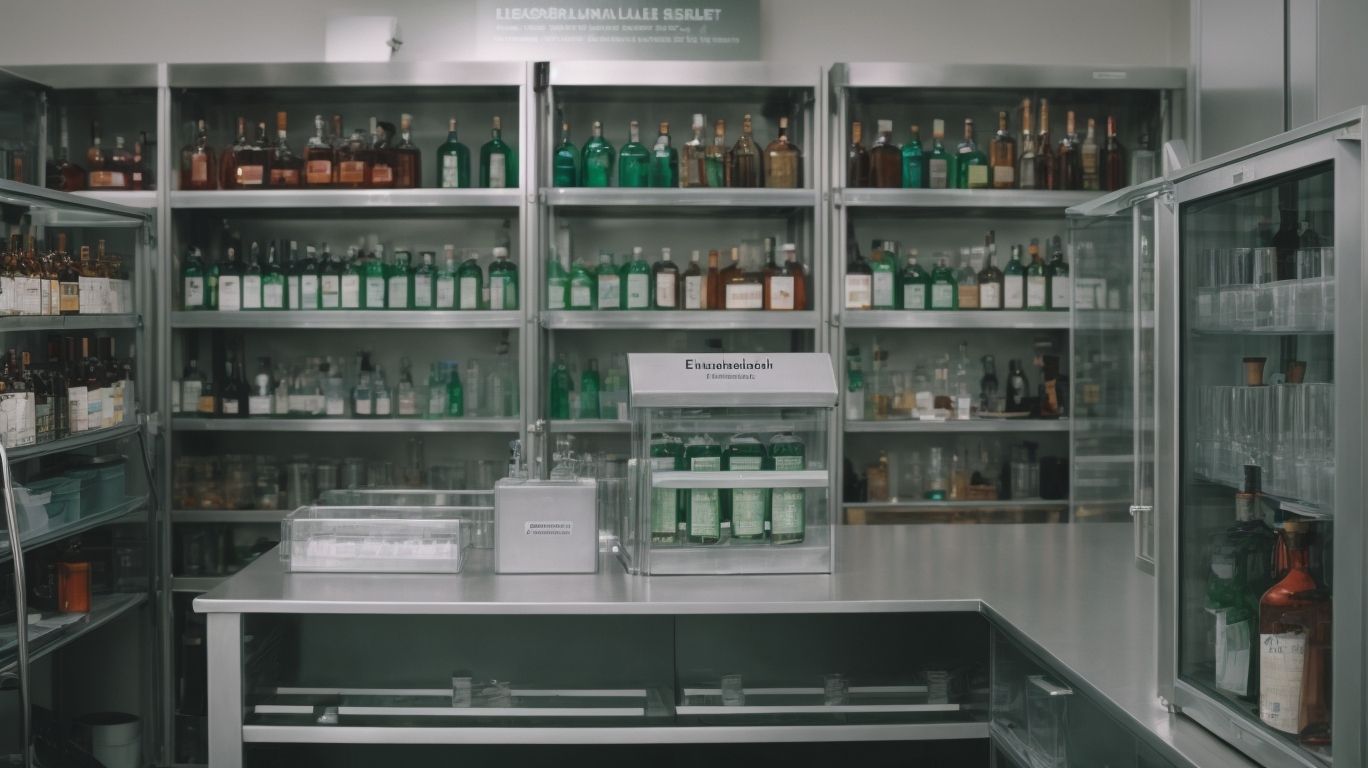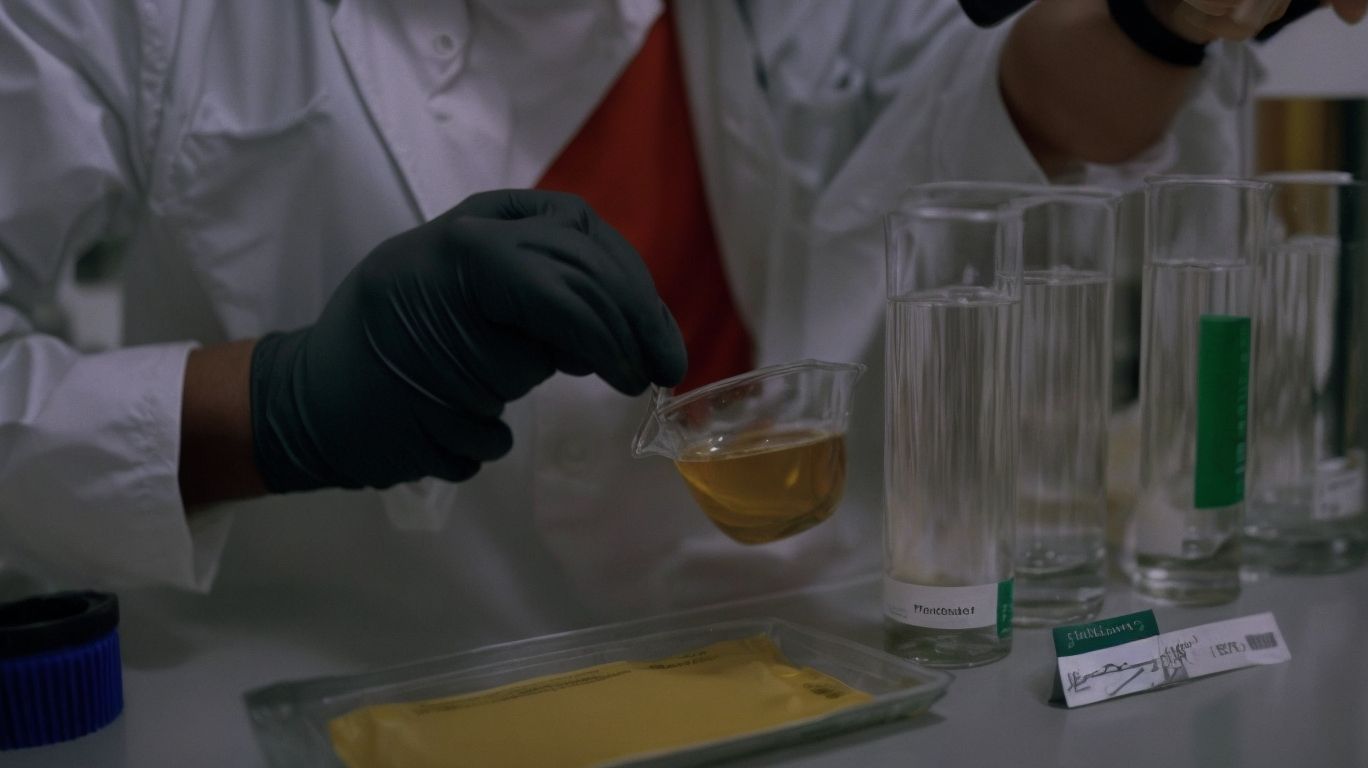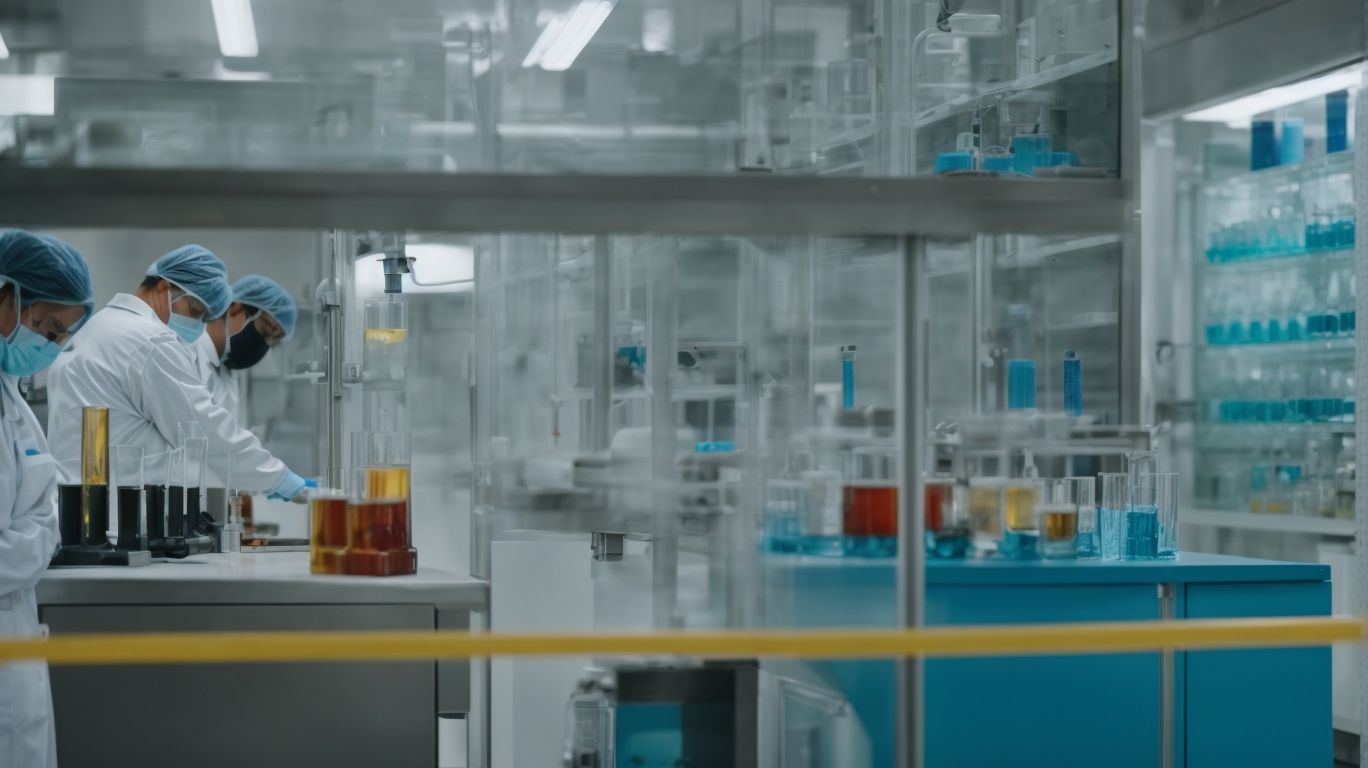Ethanol, also known as ethyl alcohol or grain alcohol, is a colorless and flammable liquid that is commonly used in laboratory settings for various purposes. It is a highly versatile chemical with a wide range of uses, including as a solvent, disinfectant, and fuel. However, due to its flammable nature and potential health hazards, it is crucial for labs to take necessary safety measures when handling and storing ethanol.
In a study published by the National Institute of Health (NIH), it was found that ethanol is one of the most frequently used chemicals in labs, and therefore, proper safety precautions must be taken to ensure the well-being of lab workers and prevent any accidents. Here are some essential measures for ensuring ethanol safety in labs.
What Is Ethanol?
Ethanol is a clear, colorless, and flammable liquid that is used in a wide range of industries, including pharmaceutical, chemical, and beverage production. It is primarily produced through the fermentation of sugars in grains, fruits, and vegetables. In lab settings, it is commonly used as a solvent for various substances, including DNA and proteins.
How Is Ethanol Used in Labs?
Ethanol has multiple uses in laboratories, including as a cleaning agent, reagent, and solvent. It is commonly used in DNA extraction, chromatography, and tissue fixation procedures. It is also used as a disinfectant for lab equipment and surfaces.
What Are the Risks of Using Ethanol in Labs?
Although ethanol is a widely used chemical in labs, it poses several risks to lab workers if not handled properly. The following are the three main hazards associated with ethanol use in labs.
1. Flammability
Ethanol is highly flammable and can easily ignite when exposed to heat, sparks, or flames. Its vapors are also flammable, making it crucial for labs to have proper fire safety measures in place.
2. Inhalation and Skin Exposure
Exposure to ethanol vapors can cause dizziness, headache, and nausea. Prolonged exposure can lead to respiratory issues and damage to the central nervous system. Skin contact with concentrated ethanol can cause irritation and dryness.
3. Eye Irritation
If ethanol comes into contact with the eyes, it can cause irritation, redness, and blurred vision. In severe cases, it can cause permanent damage to the eyes.
What Are the Essential Safety Measures for Handling Ethanol in Labs?
To ensure the safe handling and use of ethanol in labs, the following measures must be taken.
1. Proper Storage and Labeling
Ethanol must be stored in properly labeled, tightly sealed containers away from heat sources and incompatible chemicals. The storage area should be well-ventilated and free of ignition sources.
2. Personal Protective Equipment (PPE)
Lab workers must wear appropriate PPE, including gloves, goggles, and lab coats, when handling ethanol. In case of accidental skin or eye contact, the affected area must be washed with water immediately.
3. Ventilation and Fire Safety
Ethanol use must take place in a well-ventilated area with proper fire safety measures, such as fire extinguishers and fire blankets, in place. The use of open flames and other ignition sources must be avoided.
4. Emergency Procedures and First Aid
In case of spills or accidental ingestion of ethanol, proper emergency procedures and first aid must be followed. This includes evacuating the area, seeking medical attention, and administering appropriate first aid measures, such as flushing the affected area with water.
How Can Labs Ensure Ethanol Safety for Their Workers?
In addition to the essential safety measures, labs can take
Key Takeaways:
What Is Ethanol?
Ethanol is a colorless and flammable liquid that is derived from the fermentation of sugars in various plants. This versatile chemical is commonly utilized as a solvent, fuel, and in the production of alcoholic beverages. It also serves as a disinfectant and preservative for biological specimens in laboratory settings.
Due to its flammability and potential health risks, it is crucial to handle ethanol with caution. Having a thorough understanding of what ethanol is and its properties is crucial for implementing proper safety protocols when working with this substance.
How Is Ethanol Used in Labs?
Ethanol is a commonly used substance in laboratories for various purposes. Here are some of the most common ways in which it is utilized:
- Disinfection: Ethanol is utilized as a disinfectant to sterilize surfaces and equipment.
- Preservation: Ethanol is used to preserve biological samples, such as tissues and cells.
- Extraction: Ethanol is used as a solvent to extract compounds from plant materials or other substances.
- Dehydration: Ethanol is used to remove water from samples during tissue processing for microscopy.
- Antibacterial agent: Ethanol is used as an antibacterial agent in microbiology experiments.
These are just a few examples of the many ways in which ethanol is commonly used in laboratories. Its versatility and effectiveness make it an essential component in many scientific practices.
What Are the Risks of Using Ethanol in Labs?

Photo Credits: Chemicalglossary.Net by Jose Sanchez
In laboratory settings, the use of ethanol is common for various purposes, from cleaning equipment to conducting experiments. However, it is important to understand the potential risks associated with handling this chemical. In this section, we will discuss the specific hazards of using ethanol in labs, including its flammability and potential for inhalation and skin exposure. We will also touch on the potential for eye irritation, and provide essential measures for ensuring ethanol safety in the lab.
1. Flammability
Flammability is a significant risk when handling ethanol in labs. To ensure safety, follow these steps:
- Store ethanol in a designated flammable liquid storage cabinet.
- Label containers properly with flammable symbols and warning signs.
- Wear appropriate personal protective equipment, including flame-resistant lab coats and gloves.
- Maintain adequate ventilation in the lab to prevent the buildup of flammable vapor.
- Implement fire safety measures, such as having fire extinguishers and fire blankets readily accessible.
- Establish emergency procedures and train lab personnel on how to respond in case of a fire.
- Conduct regular inspections to identify potential fire hazards and address them promptly.
By adhering to these precautions, labs can reduce the risk of fire accidents associated with the flammability of ethanol.
2. Inhalation and Skin Exposure
Inhalation and skin exposure to ethanol in labs can pose a potential hazard, and it is important to take necessary precautions by following these steps:
- Always ensure that you are working in a well-ventilated area to minimize inhalation exposure.
- Wear appropriate personal protective equipment, such as gloves and lab coats, to shield the skin from direct contact.
- Handle ethanol containers with care to prevent any spills or splashes onto the skin.
- In case of skin exposure, immediately wash the affected area with soap and water.
- If ethanol is accidentally inhaled, move to an area with fresh air and seek medical attention if symptoms persist.
Fact: Prolonged skin exposure to ethanol can result in dryness, redness, and irritation.
3. Eye Irritation
Eye irritation is a potential risk when working with ethanol in labs. To minimize this risk, follow these essential steps:
- Wear protective eyewear, such as safety goggles, to shield your eyes from potential splashes or exposure to fumes.
- Ensure a well-ventilated workspace to reduce the concentration of ethanol vapors in the air.
- If eye contact occurs, immediately flush the affected eye with water for at least 15 minutes.
- Seek medical attention if any irritation or discomfort persists after rinsing.
What Are the Essential Safety Measures for Handling Ethanol in Labs?

Photo Credits: Chemicalglossary.Net by Jacob Lewis
Ethanol is a commonly used chemical in laboratory settings, but it can also pose potential safety hazards if not handled properly. In this section, we will discuss the essential safety measures that should be taken when working with ethanol in labs. From proper storage and labeling to personal protective equipment and emergency procedures, we will cover all aspects of ensuring ethanol safety in lab environments. Let’s dive into the necessary precautions for handling this chemical with caution and care.
1. Proper Storage and Labeling
Proper storage and labeling of ethanol in laboratories is essential for maintaining safety. To ensure this, follow these steps:
- Store ethanol in approved, tightly sealed containers away from heat sources or open flames.
- Clearly label containers with the name, concentration, and hazard warnings of the ethanol.
- Keep ethanol containers separate from oxidizing agents and other incompatible substances.
- Store in well-ventilated areas or flammable liquid storage cabinets.
To further enhance safety, prioritize regular inspections, provide proper training, and establish communication channels. Remember, following these steps mitigates risks and promotes a safe working environment.
2. Personal Protective Equipment
Using personal protective equipment (PPE) is crucial for ensuring safety when working with ethanol in labs. Here are important steps to follow:
- Wear appropriate gloves, such as nitrile or neoprene gloves, to protect hands from direct contact with ethanol.
- Use safety goggles or face shields to shield eyes from potential splashes or spills of ethanol.
- Wear a lab coat or protective clothing to prevent ethanol from coming into contact with skin or clothing.
- Make use of a fume hood or adequate ventilation to minimize inhalation of ethanol vapors.
- Ensure that PPE is in good condition, properly fitted, and regularly inspected for any damage or wear.
By following these steps, lab workers can minimize the risks associated with ethanol and protect their health and safety.
3. Ventilation and Fire Safety
Proper ventilation and fire safety measures are essential when working with ethanol in laboratories to protect workers and prevent accidents. Here are some steps to follow:
- Ensure that the laboratory has adequate ventilation systems in place to remove any ethanol vapors and prevent the buildup of flammable gases.
- Regularly inspect and maintain ventilation equipment, such as fume hoods, to ensure they are functioning properly.
- Store ethanol in approved containers and cabinets, away from any sources of ignition, to minimize the risk of fire.
- Implement and maintain fire safety measures, including fire extinguishers and fire alarms, within the laboratory.
Pro-tip: Conduct regular fire drills and train laboratory personnel on proper fire safety procedures to ensure everyone is prepared in case of an emergency.
4. Emergency Procedures and First Aid
In case of an emergency involving ethanol in a laboratory setting, it is vital to follow proper procedures and quickly administer first aid. Here are the necessary steps to ensure the safety of all individuals involved:
- Immediately evacuate the area and inform others of the emergency.
- Call emergency services or the designated emergency number.
- Assess the affected person’s condition and provide appropriate first aid, such as removing contaminated clothing or administering CPR if necessary.
- Provide detailed information to medical professionals regarding the ethanol exposure and any symptoms exhibited.
By following these emergency procedures and promptly administering first aid, labs can effectively handle ethanol-related incidents and protect the well-being of their workers.
How Can Labs Ensure Ethanol Safety for Their Workers?

Photo Credits: Chemicalglossary.Net by Eugene Hall
When working with highly flammable substances such as ethanol, safety precautions are of utmost importance. In laboratory settings, where ethanol is commonly used as a solvent, it is crucial to have measures in place to protect the well-being of workers. In this section, we will discuss the essential steps that labs can take to ensure ethanol safety. These measures include proper training and education, regular inspections and maintenance, proper waste disposal, and effective communication and reporting protocols. By implementing these measures, labs can create a safer working environment for their employees.
1. Training and Education
When it comes to ensuring safety in labs that handle ethanol, training and education are essential. Here are some steps to implement comprehensive training and education programs:
- Develop training modules that cover the properties, hazards, and safe handling procedures of ethanol.
- Conduct regular training sessions for all lab personnel, including both new hires and experienced staff.
- Include hands-on demonstrations and practical exercises to reinforce understanding.
- Provide written materials and resources for reference, such as safety manuals and standard operating procedures.
- Encourage open communication and discussion about ethanol safety, allowing employees to ask questions and seek clarification.
- Offer refresher courses and periodic assessments to ensure retention of knowledge.
- Stay up-to-date with the latest research and safety guidelines related to ethanol handling, incorporating new information into training programs as needed.
- Document training records and certifications to track employee compliance and identify areas for improvement.
2. Regular Inspections and Maintenance
Regular inspections and maintenance are crucial for ensuring safety when working with ethanol in laboratories. To ensure proper safety measures are being followed, here are the steps to follow:
- Conduct regular inspections of storage areas to ensure they are in proper condition and are properly labeled.
- Promptly clean up any leaks or spills that are found during inspections.
- Regularly inspect and maintain ventilation systems to ensure adequate airflow.
- Monitor and maintain fire safety equipment, such as fire extinguishers and sprinkler systems.
- Train all laboratory personnel on the importance of conducting regular inspections and maintenance.
- Create a schedule for conducting inspections and completing maintenance tasks to ensure they are done regularly.
- Keep detailed records of all inspections and maintenance activities for documentation and future reference.
3. Proper Waste Disposal
Proper waste disposal is essential when handling ethanol in laboratories to ensure the safety of personnel and the protection of the environment.
- Segregate waste: It is crucial to separate ethanol waste from other types of waste to prevent contamination.
- Use appropriate containers: Ethanol waste should be stored in approved containers that are leak-proof and resistant to ethanol.
- Label containers: Clearly label containers with the contents and hazard symbols to communicate potential risks.
- Dispose of in designated areas: It is important to follow local regulations and guidelines for disposing of ethanol waste in designated areas or through authorized waste management services.
- Consider recycling: If available in your area, explore options for recycling ethanol waste.
- Train and educate: Proper waste disposal procedures should be taught to lab personnel to ensure compliance and safety.
- Maintain records: Detailed records of ethanol waste disposal activities should be kept for compliance and tracking purposes.
4. Communication and Reporting Protocols
In laboratories, it is crucial to have effective communication and reporting protocols in place to ensure the safety of those working with ethanol. To maintain a safe working environment, the following steps can be implemented:
- Establish clear channels of communication for reporting any ethanol-related incidents or concerns.
- Encourage open dialogue between lab workers and management to address any potential safety issues.
- Create a formal reporting system where incidents and near misses can be documented and investigated.
- Regularly review and update protocols to reflect changes in regulations and best practices.
Fun Fact: Good communication and reporting protocols not only enhance safety but also foster a culture of transparency and collaboration in the lab.
Frequently Asked Questions
1) What are some significant hazards associated with handling alcohol in labs?
The Safety Data Sheet (SDS) for ethanol and methanol states that they are acutely toxic by oral, dermal, or inhalation means, and that they can also form explosive mixtures in the air if mishandled.
2) Are there any specific safety standards that should be followed when handling alcohol in schools?
Yes, it is important for teachers and administrators to follow legal safety standards and professional practices when handling alcohol in schools. This includes conducting a hazards analysis and risk assessment, as well as following a chemical hygiene plan.
3) Can alcohol be used in labs if it has been denatured to make it unfit for human consumption?
Yes, ethanol is commonly used in biology and chemistry labs, but it must be denatured to make it safe for use. Methanol is also commonly used, but it is important to note that it is highly toxic and should be handled with extreme caution.
4) How can teachers ensure they are handling alcohol safely in the lab?
Teachers should review the Safety Data Sheet (SDS) for the alcohol they are using, conduct a hazards analysis and risk assessment, and review safety measures with the Chemical Hygiene Officer. They should also ensure that all individuals in the lab are wearing proper personal protective equipment (PPE) and that the alcohol is handled in a fume hood.
5) Is there any required training for handling alcohol in labs?
Yes, teachers should receive annual training on how to handle alcohol safely in the lab. This training should cover proper use of fire safety equipment and spill clean-up procedures.
6) What should be done in the event of a fire involving alcohol in the lab?
If district policy allows it, the teacher should use a fire extinguisher to put out the fire. If not, the room should be evacuated, the fire alarm should be pulled, and the teacher should know the location of spill clean-up materials in case of a spill. It is also important to know the location of fire safety equipment and how to use it in case of an emergency.
